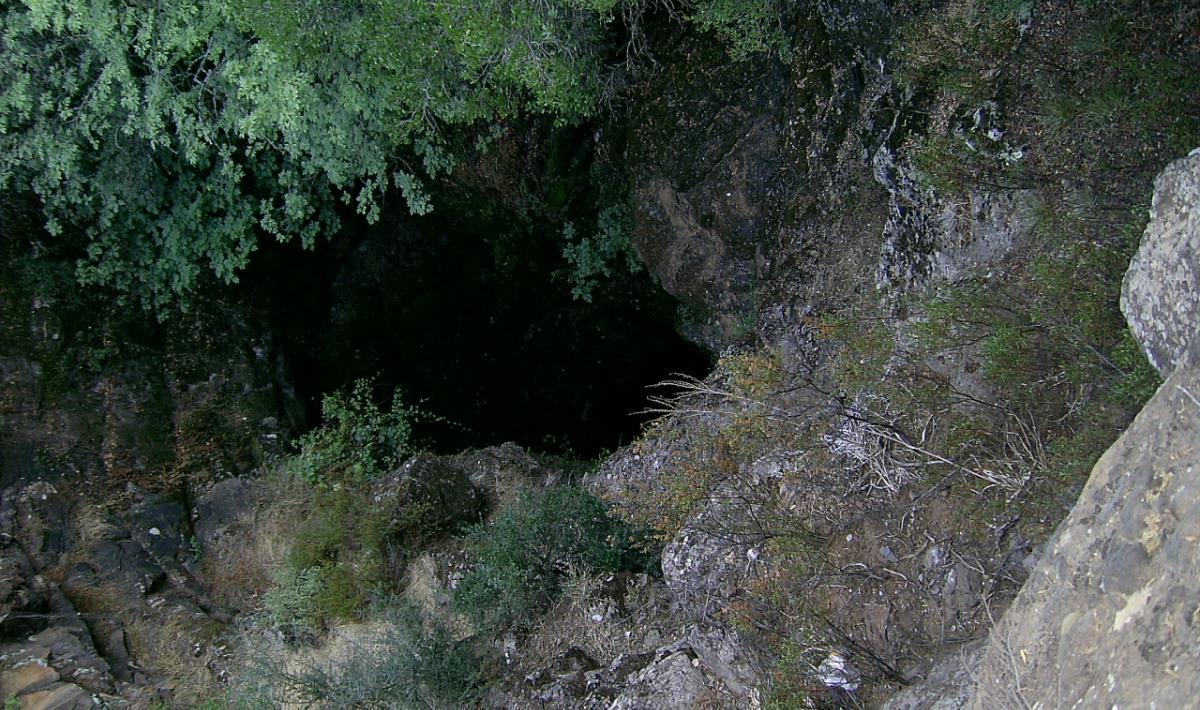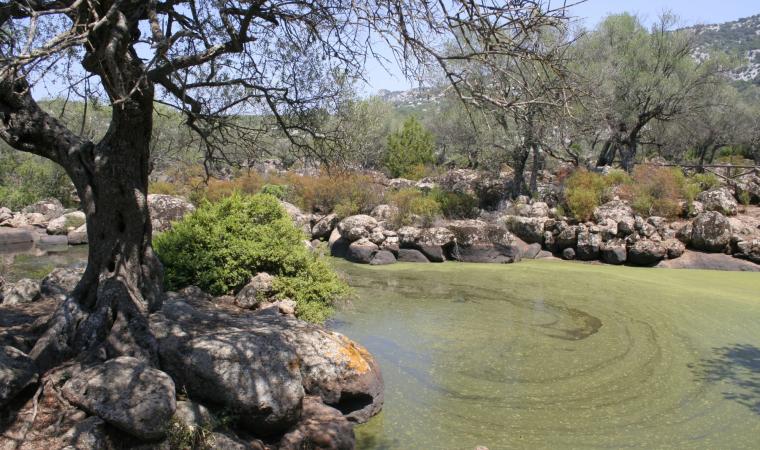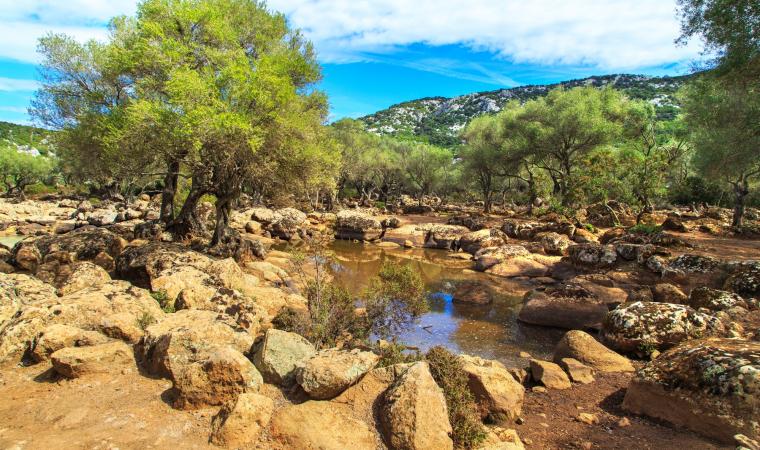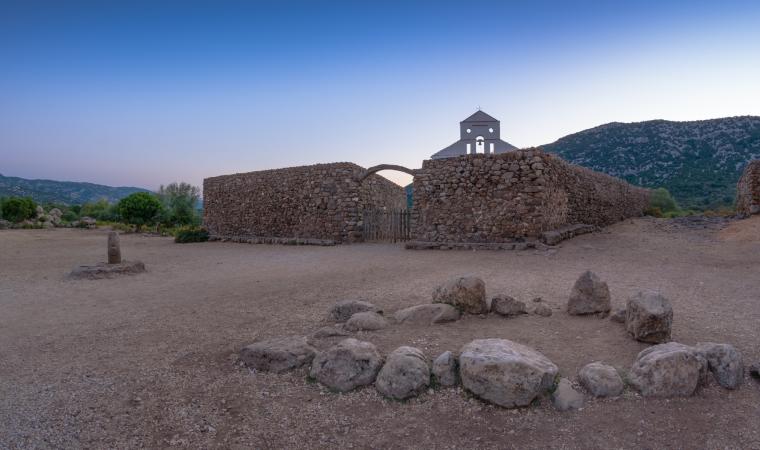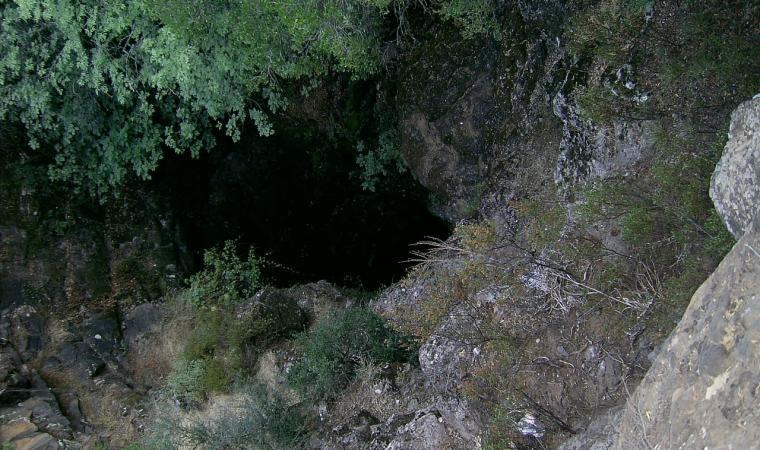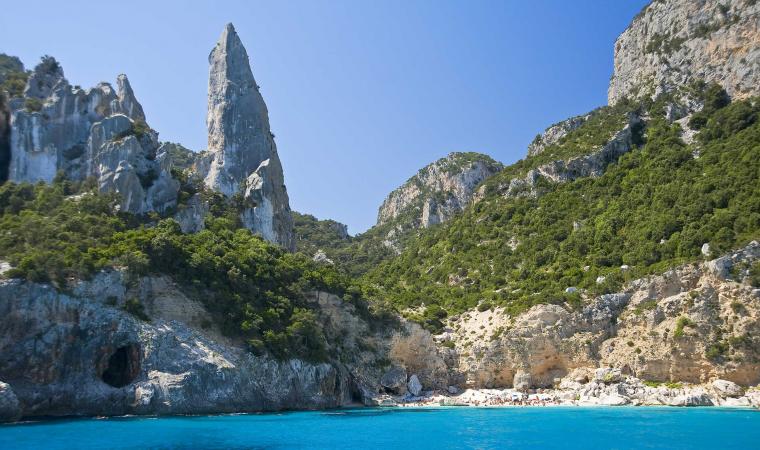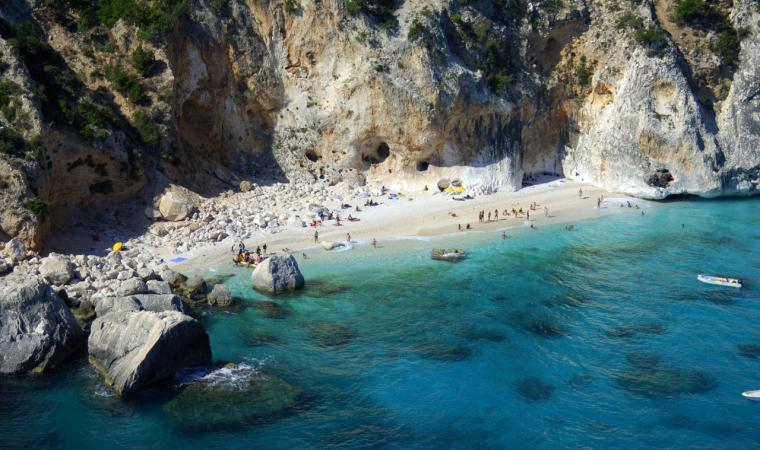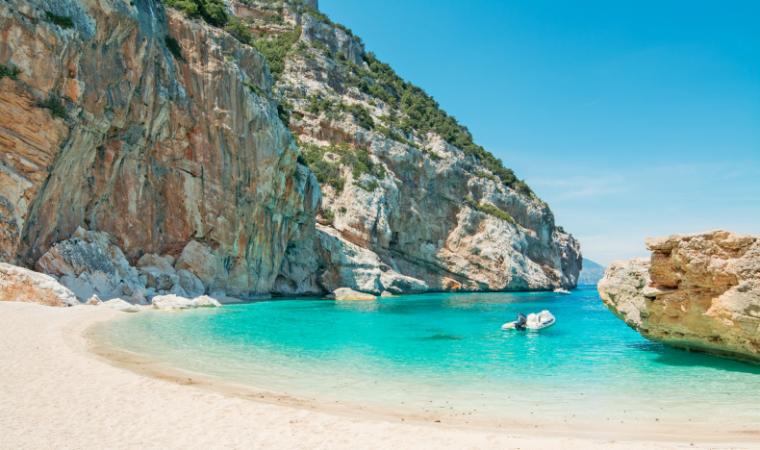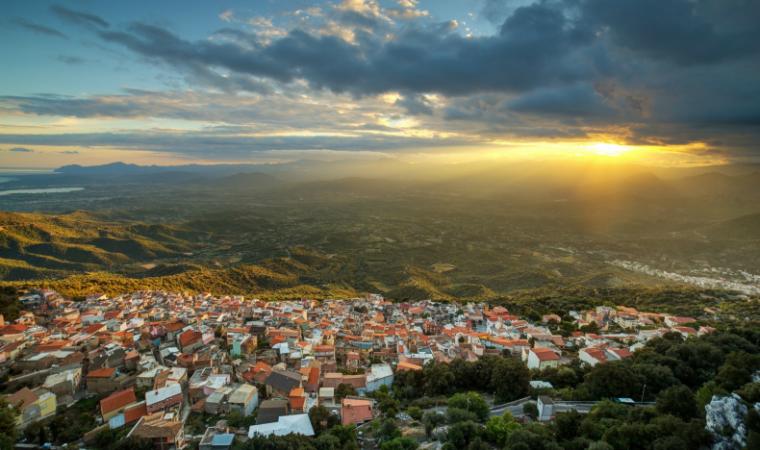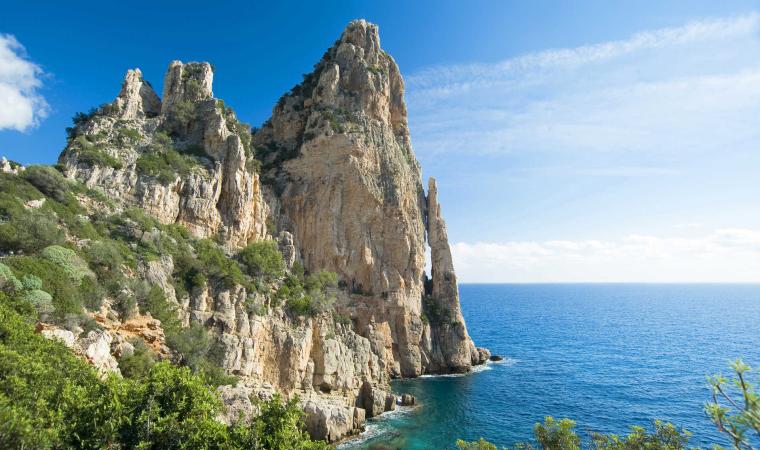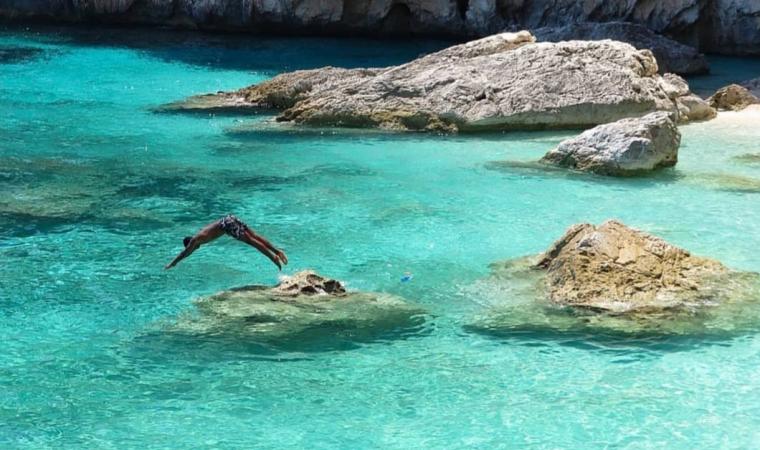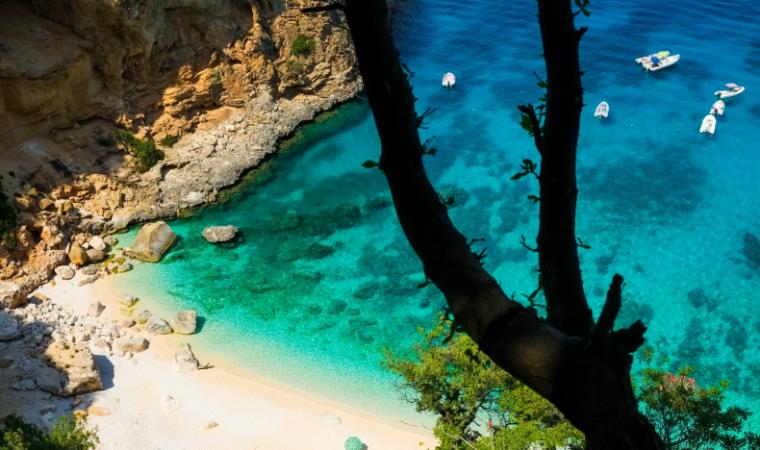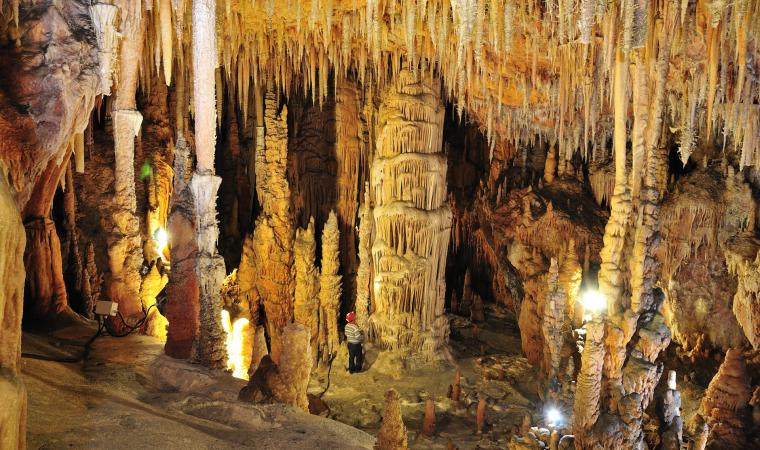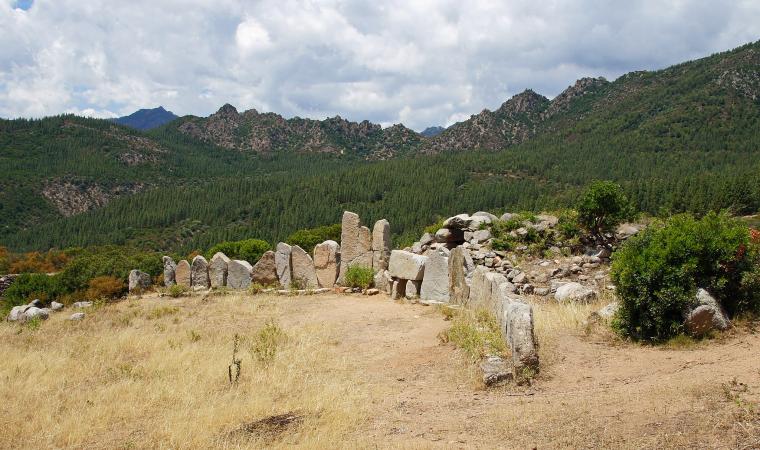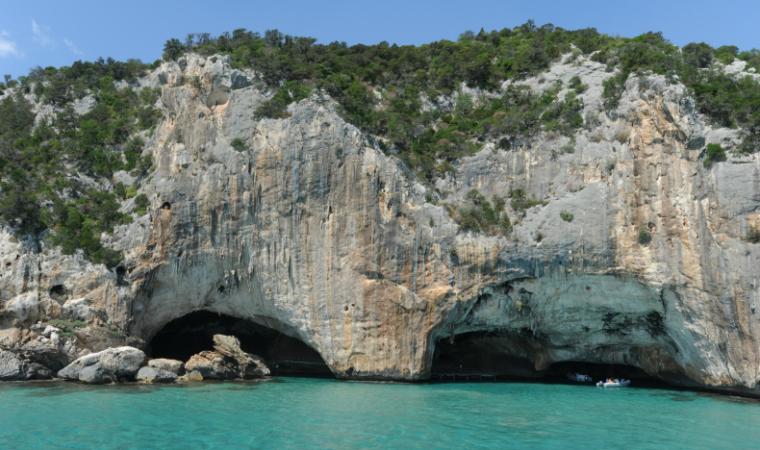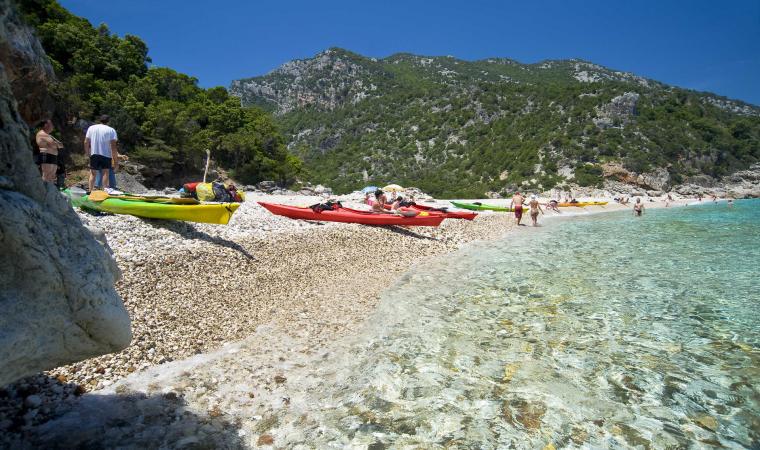Its vertiginous height of 270 metres makes su Sterru Europe’s deepest single-span chasm. Formed in the heart of the Golgo plateau (400 metres high), within the Baunei territory, the chasm is a place filled with mysteries and ancient legends that will give you goose bumps: according to legend, it was once a snake’s lair (su scultone), whose menace was warded off by the building, in the 17th century, of the church of San Pietro nearby. The cavity is actually the habitat of the tame Sardinian cave salamander, an amphibian adapted to this location, accompanied by the porrohomma spider and a few terrestrial crustaceans. The chasm was initially believed to be a volcano (in old topographic maps it was identified as “Old Crater”) 100-150 metres deep, but its complete exploration, in 1957, revealed the enormous karstic abyss created by erosion. Sterru, in fact, means both “descending slope” and “pit”, and is a term commonly used to other place names in Ogliastra and Barbagia. Today, it is only explored by experienced speleologists.
The chasm opens suddenly on the plateau, 13 kilometres from the town of Baunei. The mouth of the chasm is made of dark basaltic rocks, while the inner part is formed by white limestone. Its 25 metres of diameter increase to 40 in the bottom. It can be reached on foot my crossing a fascinating landscape: lava flow on limestone, ferns and holm oaks covered in moss, small ponds (piscinas). It is an open-air museum: wells to celebrate ancestral rituals, domus de Janas, which attest to human presence since the Neolithic, Giants’ tombs and almost twenty Nuragic complexes, placed as sentinels at the accesses to the valley. A complex network of fortresses built after 1500 BC: it feels like a walk through pre-history.
From the Golgo plateau, you get to the Bacu Canale forest and Pedra Longa, a 128-metre pinnacle over the sea. After three and a half kilometres of trekking, you will get to the enchanting Cala Goloritzè. If you would rather face a longer itinerary, leave from the little church of San Pietro to get to codula di Sisine, a calcareous valley with high walls and groves of ancient holm oaks, leading to the splendid beach of Casa Sisine.

